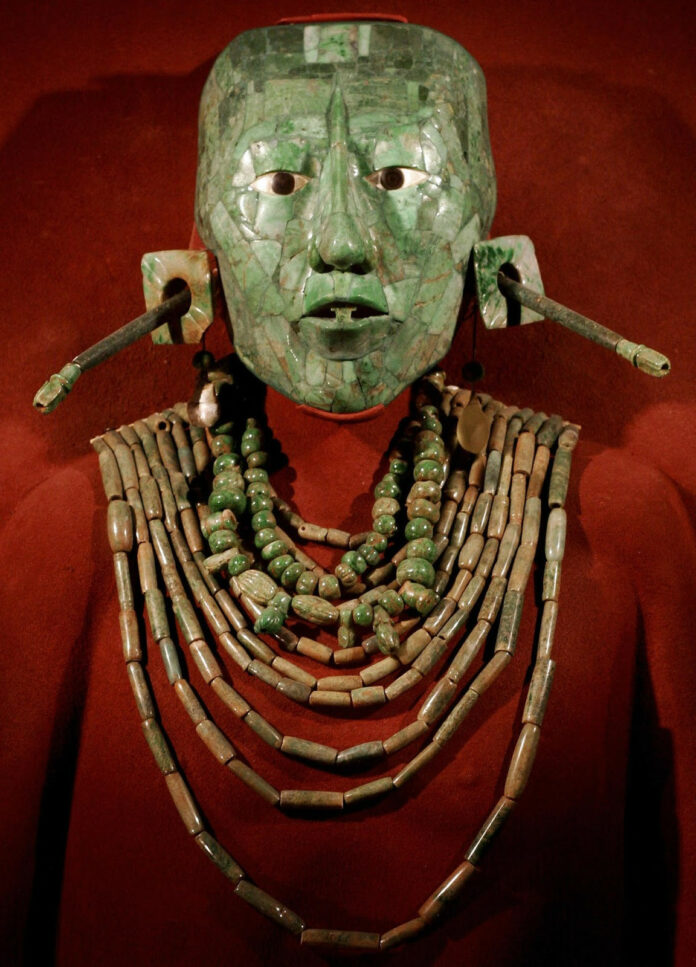In the heart of Mexico City, the National Museum of Anthropology stands as a testament to the rich cultural heritage of the ancient Maya. Among its prized possessions are the awe-inspiring jade funerary artifacts that once adorned the illustrious ruler Pakal the Great, offering a tantalizing glimpse into the opulent world of this legendary Mayan king.
The Ruler Who Embodied Mayan Greatness
Pakal the Great, also known as K’inich Janaab’ Pakal, reigned over the Maya city-state of Palenque from 615 to 683 AD, ushering in an era of unparalleled prosperity and cultural renaissance. Under his visionary leadership, Palenque flourished as a center of art, architecture, and intellectual achievement, leaving an indelible mark on the annals of Mesoamerican history.
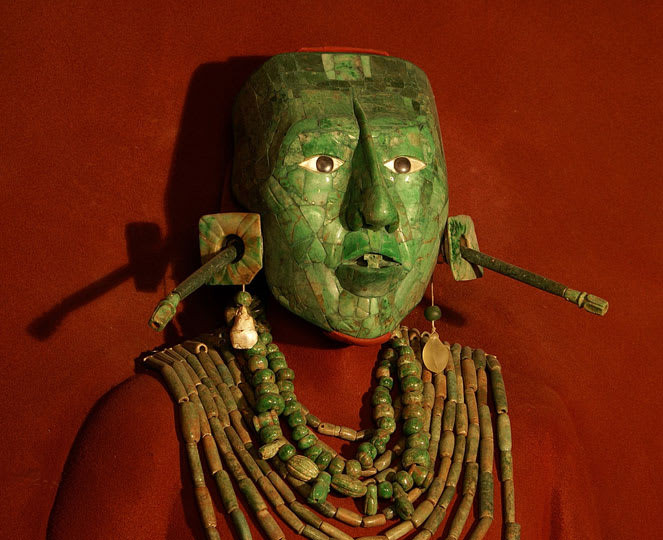
A Monarch’s Final Resting Place
Upon his death, Pakal the Great was interred in a grand burial chamber beneath the iconic Temple of the Inscriptions, a testament to his enduring legacy. It was here that archaeologists uncovered a treasure trove of jade artifacts, meticulously crafted and imbued with profound symbolic meaning.
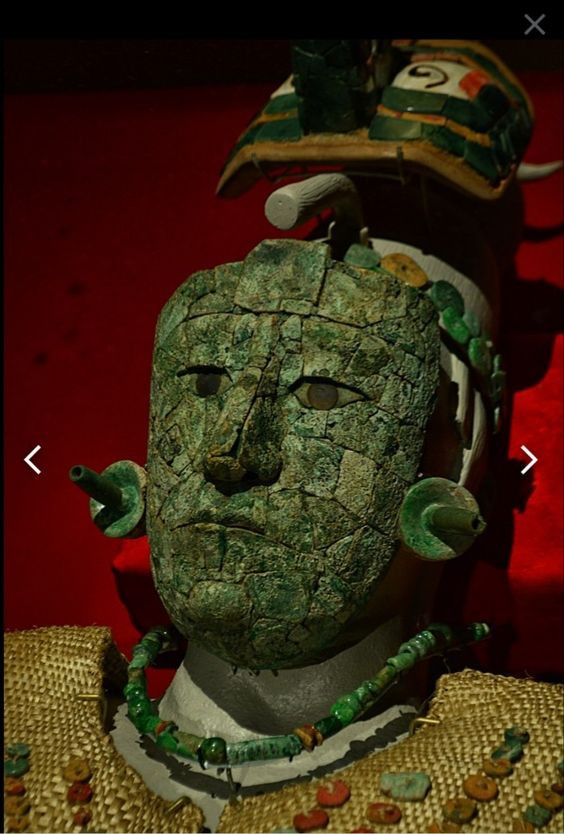
The Significance of Jade
In the world of the Maya, jade held immense significance, revered for its rarity, beauty, and spiritual properties. Believed to possess protective qualities and closely associated with fertility, royalty, and the gods, jade objects were highly prized by the elite and played a pivotal role in rituals, ceremonies, and burials.
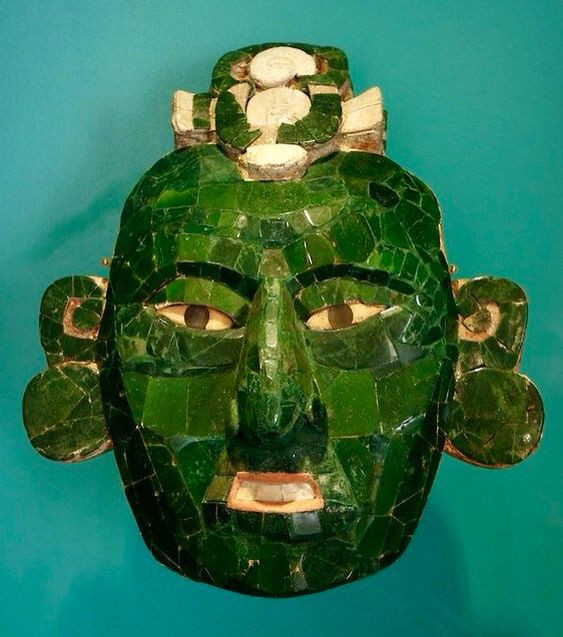
Masterpieces of Lapidary Artistry
The jade burial objects of Pakal the Great represent the pinnacle of Maya lapidary artistry. Intricately carved masks, pendants, ear spools, and beads, each meticulously crafted from the finest jadeite, showcase the mastery of Maya artisans. These objects served not only as symbols of Pakal’s status and prestige but also as conduits for spiritual power and protection in the afterlife.
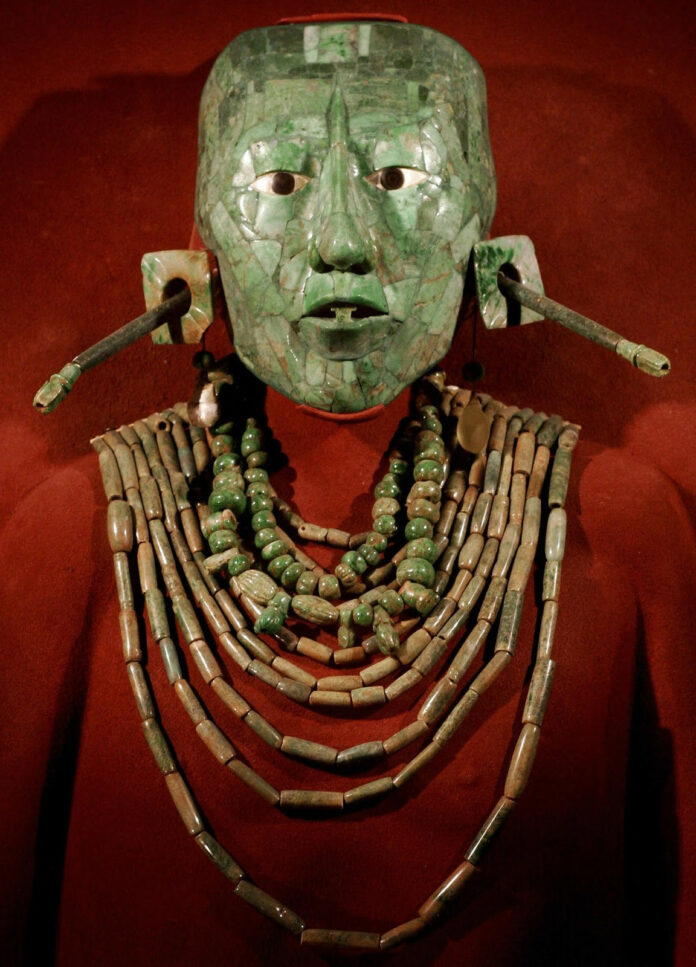
The Iconic Death Mask
Among the most captivating artifacts is Pakal’s ornate death mask, which covered his face in death. Carved with remarkable skill and precision, the mask depicts the ruler in a serene and dignified pose, with eyes closed and lips slightly parted. The intricate detailing of the mask’s features, from the finely sculpted eyebrows to the delicately rendered headdress, speaks to the mastery of Maya artisans and their ability to imbue jade with profound meaning and beauty.
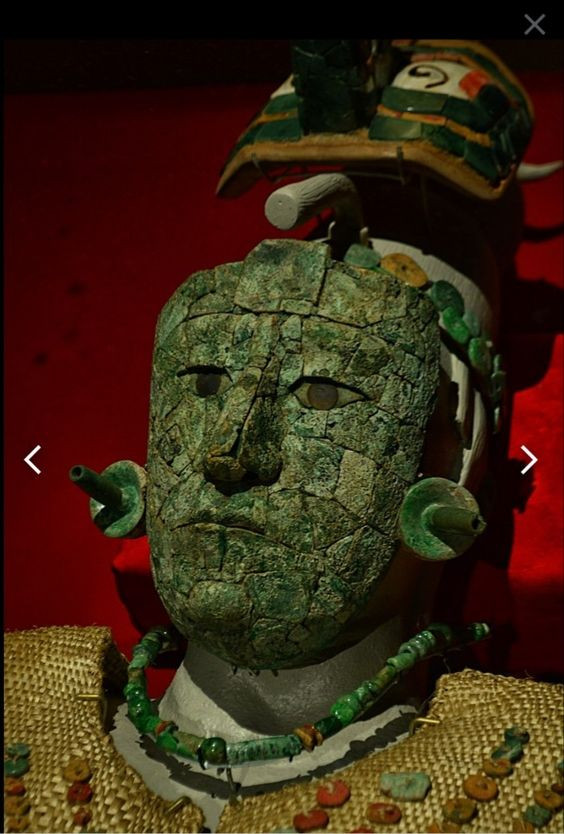
Inscriptions of Eternity
Accompanying the jade burial objects are pendants adorned with hieroglyphic inscriptions, serving as both adornments and mnemonic devices, preserving Pakal’s name and deeds for eternity. These inscriptions offer invaluable insights into the ruler’s life, reign, and religious beliefs, providing a window into the complex cosmology of the ancient Maya.
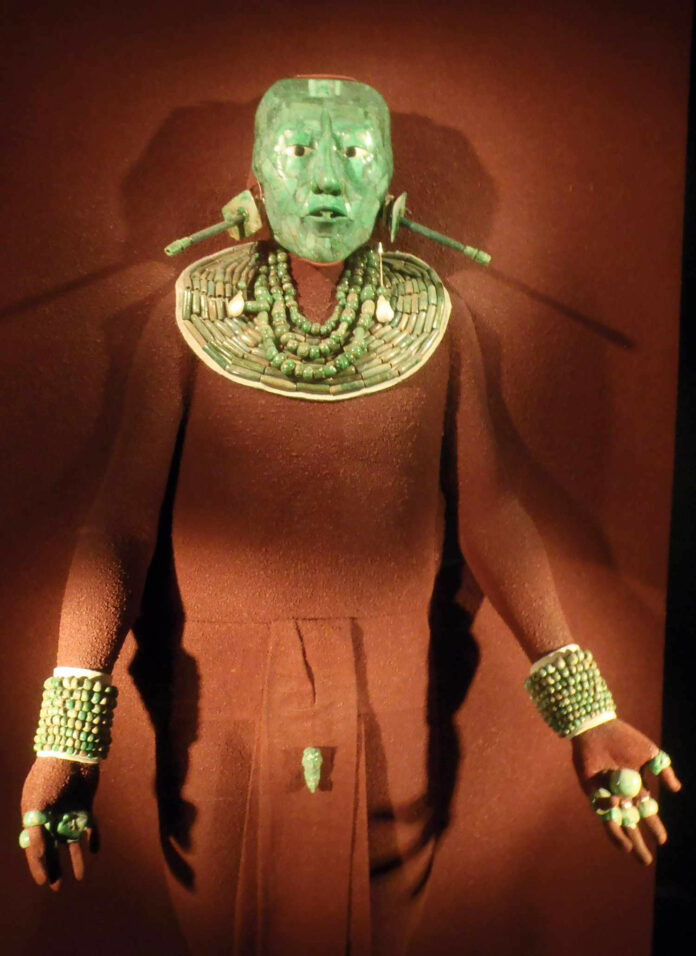
A Legacy Preserved for Generations
Today, the jade funerary artifacts of Pakal the Great stand as a testament to the enduring power of art, culture, and spirituality to transcend the bounds of time and space. As visitors marvel at these extraordinary objects, they are transported back to the height of Maya civilization, where rulers like Pakal the Great ruled with wisdom and vision, leaving behind a legacy that continues to inspire awe and admiration.
Through the jade burial objects of Pakal, we are reminded of the indomitable human spirit and the enduring human quest for knowledge, beauty, and understanding. These artifacts serve as a bridge between the ancient past and the present, inviting us to explore the mysteries of the human experience and to appreciate the rich tapestry of cultures that have shaped our world.



